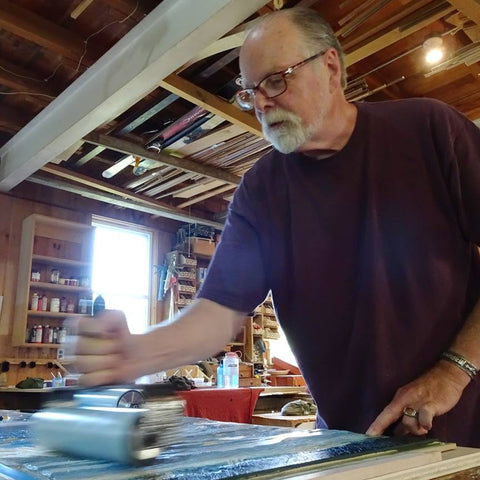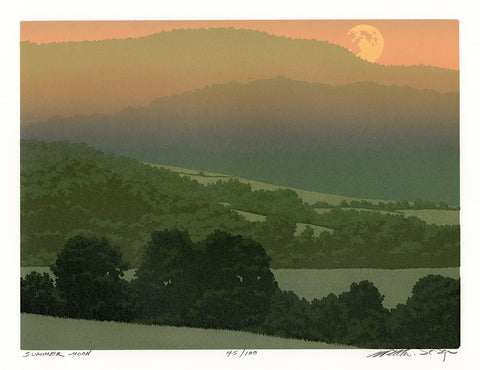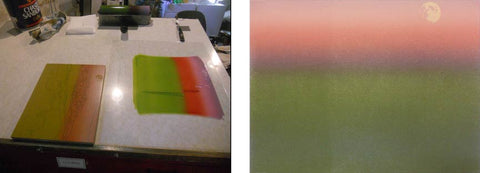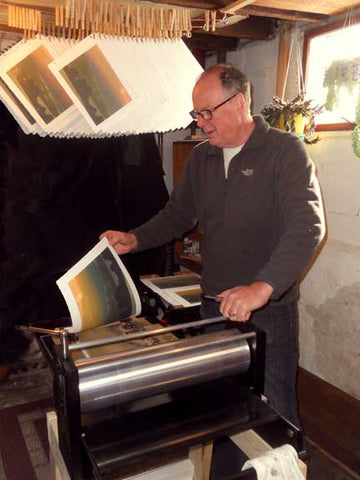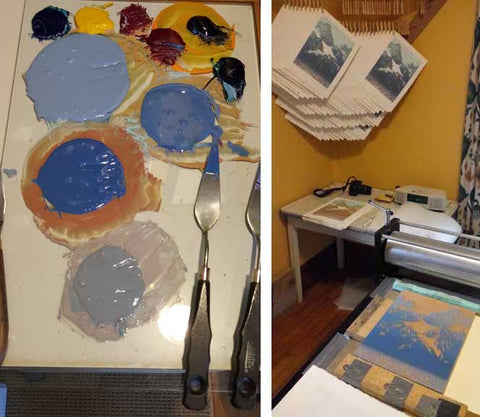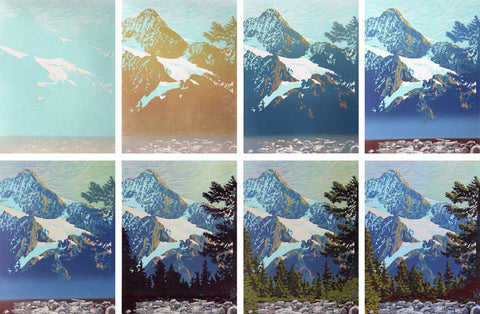William H. Hays : Sharing his process for relief printing
William H. Hays has created a life for himself that most of us only dream of. He lives in the charming town of Brattleboro, Vermont, right on the Connecticut River, which separates Vermont from New Hampshire. In his 100 year old home, the modest studio is completely dominated by a large Conrad etching press. Hays spends his days surrounded by rich pigments and carving tools, worn from frequent use, expertly crafting his work. He travels and absorbs the beauty of the natural landscape and small-town scenery and translates these experiences into extraordinary prints. Art has been his passion since he started painting when he was 15, and Hays painted with oils and watercolor for nearly 40 years. Now he almost exclusively creates relief prints. He says the following about finding printmaking as his new passion:
"I began printmaking at the urging of my late wife in 2007. Prior to that I had no experience or training in printmaking. I didn’t find out about reduction printing until I was about six months into doing linocuts. I had never heard of reduction prints before! In printmaking I am completely self taught. I only started showing my prints in galleries in 2012. So, in a way, this is all still pretty new to me. But I’m getting that hang of it…."
We definitely think he has gotten the hang of it, as the artist has won many awards over the years. With his storybook life and artistic success, it would seem plausible for such an artist to hide away and surface only to release his work into the world, before quickly diving back into his picture perfect existence as soon as possible. But another part of Hays fascinates his collectors and appreciators: his willingness to narrate and share his process. So often, artists relish an air of mystery and intrigue, allowing their work to speak for itself. Like so much of life nowadays, it can be devilishly appealing to just present a well-photographed final product, without showing the large amount of work it takes to come to that resolution. William Hays, through his website and informative newsletter, invites the public into his process and educates about both his inspiration and his intricate and laborious craft. The artist provided some valuable insight that shines a light on this aspect of his career:
"I am a naturally gregarious person and have always enjoyed showing folks what I’m working on. But since my studio is not generally public and my process is so agonizingly slow, understanding how my prints take shape would be a complete mystery without my sharing online and illustrating step-by-step. Even then it can be difficult to understand. It is a daunting and difficult process which took me about five years to master.
I know that some artists are concerned that others might copy their processes and/or their style. But I see my work as clearly identifiable as my own signature. I feel no competition or jealousy toward other artists, only comradeship. No matter how much another artist might borrow or learn from what I share, I have found that it would be nearly impossible (and certainly foolish) to try to copy what I do."
We wholeheartedly agree. Let’s take a look at some examples of Hays’ process...
Coastline Nocturne: 
In most of the his newsletter articles, Hays starts by sharing a short description of his inspiration for the new work. This particular print is an homage to the artist's cabin in Nova Scotia. Hays used aspects of each of the four pictures below to create the "Coastline Nocturne" imagery.

Next, Hays writes about how he will orchestrate the reductive printing process. This step requires complex planning, as the artist must plan exactly when a certain feature of the print will be printed and in what color stage. Printed in the wrong order, even the most beautiful composition will fail to become the print initially intended by the artist.
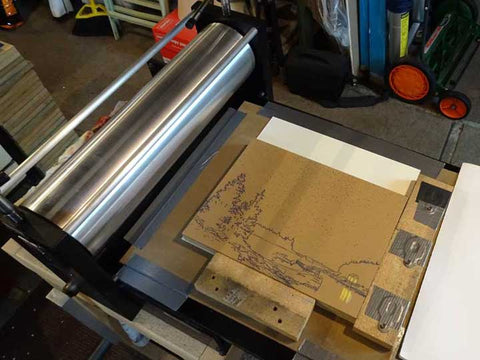
One of the most satisfying features of Hays' process blog posts, is that we get to see the state proof progressions of his prints. It shows the viewer how the artist built the image, both in composition and color, both equally important in relief printmaking.
Summer Moon:
Hays's "Summer Moon" was inspired by the Smokey Mountains of Tennessee. We thought it was especially interesting how Hays figured out the composition of this linocut:
"I began my interpretation of the memory by putting together elements from four of my photographs into a composition in black and white. By eliminating color, I was better able to concentrate on how the different layers would go together. But even this proved to be something of a sketch in that I changed my mind several times in the course of making this print."
One of the technical feats of Hays' prints is obtained by his frequent use of blended colors on a single brayer, used to print his linocuts. Considering his editions are not intended to vary much from impression to impression, utilizing variable blend rolls (also called "rainbow rolls") is quite impressive. As you can see in the image below, shades of a variety of color inks were juxtaposed and blended simultaneously onto a one roller, so as to apply all hues in one single printing run.
Like many of the Mesh artists, Hays prints his work himself. Each artists has their own process with printing, and many have their own press. Because of this, it quite unusual to see an artist actually printing their own work. After all, most artists are working alone in their studios. In the photograph below, we get the unique pleasure to see Hays printing and drying his impressions of "Summer Moon".
Glorious Day:
One of the most noticeable qualities of William Hays' prints are his strong saturated colors. The artist mixes his own colors to get the perfect shade. Here is a picture of some of his mixed colors for "Glorious Day", a print based on his travels to Mt. Shuksan in Washington State.
Hays' compositions are so well planned that it can be difficult to really appreciate fully how many colors were applied, how these colors interact and blend, and it is nearly impossible to differentiate the intricacy of the layers of a finished linocut. This photo of 8 of his color states is the perfect way to further appreciate just that intricacy.
People as talented and meticulous as William Hays have the luxury of being open about their craft. While the excellence of his physical process cannot be overstated, the true strength of Hays' prints comes foremost from his creativity and in his imagination. His openness and willingness to share fully how he creates benefits us all, and feels especially valuable during times of seclusion like these.
